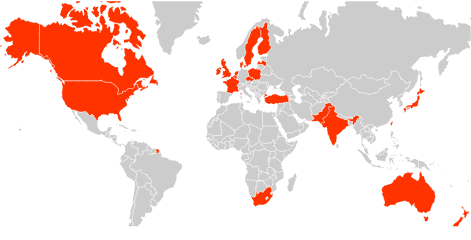Emily White, an NPR intern, kicked off the discussion early in the week, stating she never made the transition from physical to digital consumption of music.
I never went through the transition from physical to digital. I’m almost 21, and since I first began to love music I’ve been spoiled by the Internet.
I am an avid music listener, concertgoer, and college radio DJ. My world is music-centric. I’ve only bought 15 CDs in my lifetime. Yet, my entire iTunes library exceeds 11,000 songs.
Then, Camper  Van Beethoven and Cracker founder, David Lowery, responds with a nearly 3,000 word essay regarding the ethics and philosophy of creating music (or art) and being compensated.
Rather, fairness for musicians is a problem that requires each of us to individually look at our own actions, values and choices and try to anticipate the consequences of our choices. I would suggest to you that, like so many other policies in our society, it is up to us individually to put pressure on our governments and private corporations to act ethically and fairly when it comes to artists rights. Not the other way around. We cannot wait for these entities to act in the myriad little transactions that make up an ethical life. I’d suggest to you that, as a 21-year old adult who wants to work in the music business, it is especially important for you to come to grips with these very personal ethical issues.
But Jonathan Coulton takes the idea further in a different direction, using Legos to speculate what may happen with physical goods if 3D printers proliferated.
Your kid loves Legos. He’s got an X-wing fighter kit that he’s super excited about, and as he’s putting it together, one of the little pointy laser turret pieces on the tips of the wings slips out of his hands and falls down the central air conditioning vent. No problem. You fire up the old internet, and you find www.legowarez.to, the small crazy place where all of the Lego nuts go to obsessively upload and catalog 3D scans of every lego piece that has ever existed. This site is ad supported, and some douchebag in Nigeria is getting rich off it. But you find the file for the piece you need, you download it, and a few minutes later you’ve printed out a replacement piece.
Jay Frank gets curious and uses Google Trends to seek out data about potential piracy.
Google, as the worldwide leader in search results, is a strong indicator of actual file trade demand. In fact, industry watchdog Moses Avalon argued such this week at New Music Seminar. Yet, when I went to look on Google Insights to see the level of demand for free music by David Lowery’s group Camper Van Beethoven, the message I get is, “Not enough search volume to show graphs.â€This basically means, from what I can gather, that less than 50 people per monthin the entire world are even showing intent to steal his music. Statisticians basically refer to this as essentially zero.
In the broader sense, creators deserve to be paid for their work, regardless of the medium or method of distribution. The transition to legal, digital services to do this is only a recent development. Upon discovering Spotify, friends marveled, “How is this legal? There’s so much.” But if there’s no demand for an artist’s work, irrelevancy seems a much steeper price despite whatever medium the art is in.



